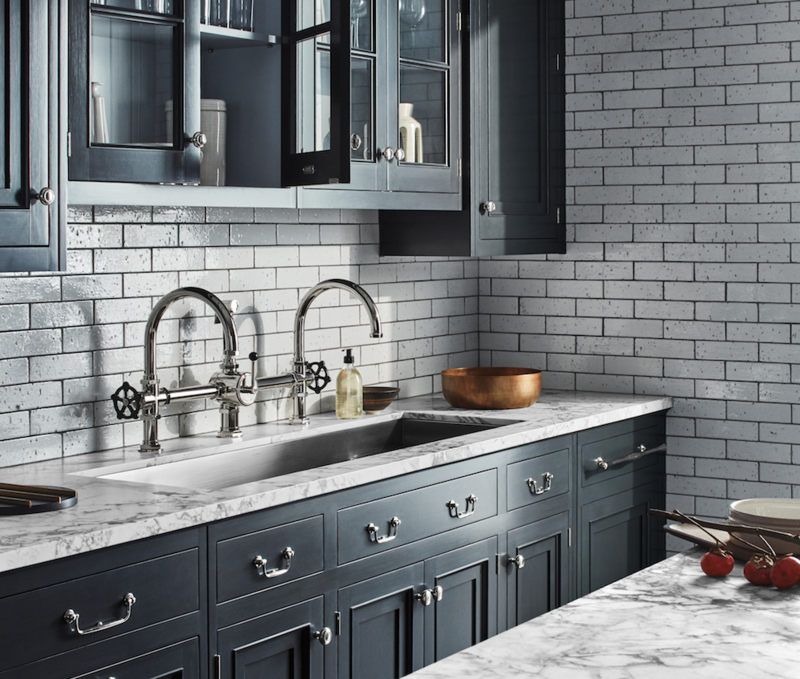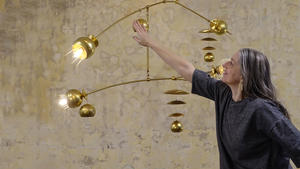Peter Sallick is the founder of Dering Hall and the Design Leadership Network, and the CEO and creative director of Waterworks. This is the first installment of his three-part Case Study series for Business of Home.
You must be extremely bold and motivated to reimagine your business. For most companies in our industry, adding 40 new employees, all dedicated to launching a new business, is unheard of—and forget about 100 percent–plus growth in showroom square footage these days. Yet, that’s exactly what we did at Waterworks when we decided to go from being primarily a bath business to being a bath and kitchen business five years ago. As part of this dramatic transformation, we even entered the cabinetry business. Everything changed—and everything continues to change, even now, years after the initial decision to take on this fundamental, long-term strategic move.
I share this case study in hopes of inspiring others in our industry to take on big challenges, and to provide a framework for thinking about all facets of such significant growth and change.

How We Made the Decision
We did not enter the kitchen or cabinetry businesses lightly. We understood clearly that cabinets are inherently a custom business with lots of competition from both established brands and independent mill workers. Our decision was driven by a larger vision for our company and by our view of a design-based future. We wanted to be a bigger part of the home by moving from being primarily a bath business to being, unequivocally, a bath and kitchen business. After all, these are the two most important rooms of the home for most people. We also wanted to move from being a product-driven business to being a product- and design-services-based business.

For us, building a kitchen business meant creating our vision for the room widely considered to be the heart of the home. Adding cabinets meant that we would be designing the entire space side by side with our clients using new technologies, as well as spending more time on-site at the project. We had also experienced the benefits of establishing larger showrooms and showroom teams, and knew that adding kitchens and cabinets would be a path to substantially expanding on this important aspect of our underlying business model.
Establishing the Vision
We started by imaging, from scratch, every aspect of Waterworks as a brand deeply connected to how people actually live in their kitchens. We crafted a story, starting by sharing images of rooms, people, food and fun that captivated us as individuals. We then extended these stories by establishing key principles that would define proprietary attributes of each product category and ultimately breaking them down into individual product concepts that we would develop.

An example of this can be seen in our Regulator faucet collection, which established a completely new scale and functional approach to how a kitchen faucet would work. We then designed a series of very long sinks that would transform the sink area as a workspace and, finally, ensured that the design of our new cabinets could accommodate this kind of new idea.
The painstaking process of designing our initial cabinet styles, entirely new kitchen fittings, pendant lighting, hardware, kitchen sinks, tiles, and even serving platters, bowls, and dish towels, took about two years from start to installation in our first prototype showroom in New York City. Ultimately, we created hundreds of new products across seven distinct product categories.
Once we started, we could not stop—we wanted our vision to be inclusive of every facet of the room so that a “Waterworks Kitchen” would have meaning as a concept, not just a collection of shoppable parts. Early on, the only way we could express this entire story as our products began to take shape was to hire an illustrator to, quite literally, paint the picture of these rooms we imagined, including populating these sketches with people enjoying themselves over food and wine.
Tackling the Biggest Challenges
In many ways, the creation of the brand vision and product assortment was the easy part. I’m not taking away from the incredible work of so many talented people on our design, product development and marketing team, but the creative process is at the heart of our business and is something we know well. The biggest challenges came first in coming to grips with the full scope of the real estate transformation that would have to occur to support our move into kitchens and cabinets, and then extended into the systems, production requirements, installation capabilities, as well as hiring of many new people with many new skills sets.

Over the past three years, we have more than doubled our showroom square footage (reimagining every facet of our showroom design along the way), hired dozens of new people, implemented multiple new technologies, and ultimately made several of the biggest investments in our company history. And we are not done yet: We still have showrooms in Miami, Atlanta, Denver and Dallas in the works, as well as a complete new three-story flagship in Manhattan.
It has not been easy, and we have faced many challenges along the way. We faced our first significant product recall ever as we pushed engineering boundaries, changed our production of cabinets to enhance capacity and capabilities, continually added people, and adjusted product assortments in supporting categories, among other moves. Along the way, we have grown from our base-year results by over 600 percent, and built kitchens will represent approximately 15 percent of our total business in 2018, four years from launch.
Keeping the Foot on the Gas
As soon as we introduced our initial two cabinet designs, we began to design new styles, conceived over two years before we could introduce them. This next set of ideas deliberately set out to raise the stakes, show our true capabilities, and demonstrate how far we could innovate. Our recently introduced Bridle and Pullman cabinet designs integrate metal hardware and trim details into the design of the cabinets in such as way as to make them both engineered and inseparable; these details entirely change the value proposition and uniqueness of each design.
We also pushed to develop a wide range of detailed and customizable drawer and cabinet inserts so that each kitchen could meet the personalized needs of its user. And we set out to build on the success of our large-scale faucets to add new styles, functional combinations, and materials to the mix, again raising the bar in this prized product category.

A few months ago, we released our first comprehensive kitchen catalog and related web navigation and content. The comprehensive nature of this supporting material was a major milestone on our path, because after years of work, we finally had one place we could point to demonstrate product assortment, design process, quality and customization. We also recently introduced enhanced rendering tools that enable our cabinet design specialists to create virtual reality walkthroughs of a client’s fully detailed kitchen, down to each cabinet pull.
Waterworks has emerged as a very different company, because we dreamed of extending our business into a new room, with a complex new offering. We have been challenged and we have been rewarded at every step. It’s exciting to be able to lead such massive change and know that in doing so we have provided our company and our clients with a new set of opportunities that will develop not just over years, but over decades—as a change like this requires such a long-term commitment to implement, grow and develop.



























